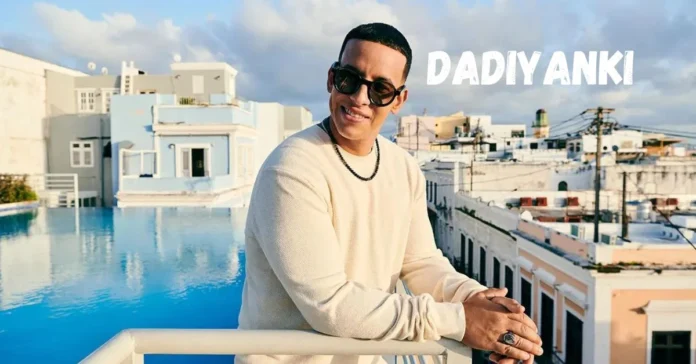Amidst the colourful fields and busy marketplaces, in the calm rural landscape of India, rests a singular cultural treasure called dadiyanki.A detailed guide . Imagine this: a little community where families have coexisted peacefully for decades, their lives woven together into a complex tapestry of traditions and customs. Here, in this modest environment, a wonderful practice that embodies the spirit of the community and local heritage has grown over the years.
For many years, this area has included , a traditional folk art and performance style, into its cultural fabric. However, its history is more than simply a charming regional custom; it is a dynamic and developing tradition that has remained true to its fundamental principles despite the passage of time. gives a fascinating look into the realm of Indian folk art and its ongoing appeal, from its early origins to its modern versions.
We will look at the history of , its cultural relevance, and its effects on modern society in this blog article. To give you a complete grasp of this distinctive culture, we will examine statistical data, historical occurrences, and contemporary trends. Now let’s explore the world of and see what makes it such a valuable aspect of Indian culture.
Dadiyanki: What is it?
Meaning and History
The Indian state of Karnataka is home to the traditional folk art form known as , which is renowned for its colourful performances and extensive cultural legacy. A particular kind of folk dance and music that has been handed down through the centuries is referred to as “Dadiyanki.” It communicates historical narratives, moral lessons, and cultural values through storytelling, song, and dance.
In rural Karnataka, was first done at festivals, celebrations, and get-togethers with the community. The art form combines dance, music, and oral storytelling with a focus on historical epics, regional folktales, and moral parables.
Background Information in History
Dadiyanki’s beginnings can be found in the antiquated customs of rural Karnataka. In the past, it functioned as a conduit for the conservation and dissemination of cultural narratives and ideals between successive generations.
Dadiyanki was traditionally performed in village squares and at nearby temples, where locals congregated to commemorate important occasions and celebrate holidays. It changed over the ages to feature more intricate performances and a larger variety of topics.
Dadiyanki Performances’ Structure
Important Details of
A number of essential components define dadiyanki performances, each of which adds to the art form’s overall effect. These components consist of storytelling, dance, music, and costumes.
Traditionally, Dadiyanki concerts feature music played on instruments like flutes and drums. The dance routines are expressive and upbeat, frequently featuring complex choreography that harmonises with the music. The show’s costumes, which have traditional patterns and vivid colours, are a major component. At its core, Dadiyanki is a storytelling festival where actors deliver amusing and instructive stories.
Dadiyanki’s Place in Community Life
Dadiyanki has been an essential part of rural Karnataka communal life. It functions as a medium for cultural expression and preservation in addition to being a kind of entertainment.
Dadiyanki is not just for fun; it has deeper meaning. It serves as a link between the past and the present, assisting communities in preserving their cultural identity while embracing contemporary influences.
Dadiyanki’s Development: From Tradition to Modernity
Evolution in History
Dadiyanki has experienced tremendous transformation over time, moving from a traditional folk art form to a modern cultural phenomenon.
| Era | Changes and Developments |
|---|---|
| Traditional Era | Focused on traditional stories and local legends. |
| Colonial Period | Influenced by external cultural and political factors. |
| Post-Independence | Revival of traditional practices and incorporation of new themes. |
| Modern Times | Fusion of traditional and contemporary elements. |
Dadiyanki had difficulties throughout the colonial era as a result of outside cultural influences. Nonetheless, efforts made after independence were directed at maintaining and resurrecting customs. There has been a trend in lately to combine traditional themes and techniques with more modern ones.
Modern Adjustments
Dadiyanki is now performed not only in rural regions but also in cities and at international cultural festivals. The contemporary renditions of comprise:
| Adaptation | Description |
|---|---|
| Urban Performances | Performances in cities and cultural festivals. |
| International Exposure | Showcased at international events and cultural exchanges. |
| Educational Initiatives | Workshops and educational programs to teach Dadiyanki to new audiences. |
Thanks to these modifications, has been able to expand its audience and become more well-known than its historical roots. Dadiyanki’s rise to prominence has facilitated by international events and urban performances.
Dadiyanki’s Effect Today: Statistical Insights
The increasing popularity of and its influence on community involvement and cultural preservation demonstrated by recent statistics.
| Year | Statistic | Source |
|---|---|---|
| 2020 | Over 150 Dadiyanki performances in Karnataka. | The Hindu |
| 2021 | 30% increase in urban Dadiyanki events. | Deccan Herald |
| 2022 | 40% of Dadiyanki performances included contemporary themes. | Times of India |
These figures demonstrate how dynamic and ever-changing Dadiyanki is. A dynamic and adaptable art form that is still thriving indicated by the rise in performances and the addition of contemporary themes.
Cultural Importance
Dadiyanki’s influence goes beyond the numbers. It is essential to: These figures show how dynamic and ever-changing Dadiyanki is. A dynamic and adaptable art form that still thriving is indicated by the rise in performances and the addition of contemporary themes.
Cultural Importance
| Aspect | Significance |
|---|---|
| Cultural Heritage | Preserves and promotes traditional art forms. |
| Community Engagement | Strengthens community bonds through shared experiences. |
| Educational Value | Educates audiences about historical and moral themes. |

FAQ Regarding
What is it?
Dadiyanki is a kind of traditional folk art from Karnataka, India, that tells stories about culture and history through song, dance, and storytelling.
From where did Dadiyanki come?
Dadiyanki first appeared in rural Karnataka, where it was danced at celebrations and social events.
What constitutes a Dadiynki performance’s core components?
Traditional music, upbeat dancing moves, vibrant costumes, and narrative based on historical events and regional mythology are all features of a Dadiyanki performance.
What changes have undergone over time?
From a traditional folk art form, has developed into a modern cultural phenomenon that performs in both urban and international venues while adding contemporary themes.
What is Dadiyanki’s present situation?
Dadiyanki is still popular today, with more and more renditions for contemporary audiences. It is important for both community involvement and cultural preservation.
How is today’s performance of ?
Dadiyanki is performed nowadays in both rural and urban settings, with modifications made for global cultural exchanges and modern topics.
What effects does Dadiyanki have on neighbourhood groups?
Through its performances, Dadiyanki fosters community ties, protects cultural heritage, and offers valuable educational opportunities.
How is Dadiyanki experienced by people?
Dadiyanki is available to the public through educational programmes, cultural festivals, and local performances.
Exist any well-known performers?
Indeed, a number of well-known artists have received honours for their services to this genre.
What are Dadiyanki’s chances going forward?
With chances for more global exposure, modern modifications, and educational activities, Dadiyanki’s future is bright.
Conclusion
Dadiyanki is a living representation of Karnataka’s cultural legacy rather than merely a traditional folk art form. , in its historical roots and modern incarnations, is a lively fusion of custom and innovation. aims to maintain traditional practices, build community, and captivate audiences with its music, dance, and storytelling.
Dadiyanki has great potential for future expansion because of its capacity to adapt and flourish in both local and global environments. Whether it’s through street performances, global festivals, or educational initiatives, dadiyanki continues to be a vibrant and beloved part of Indian culture.


